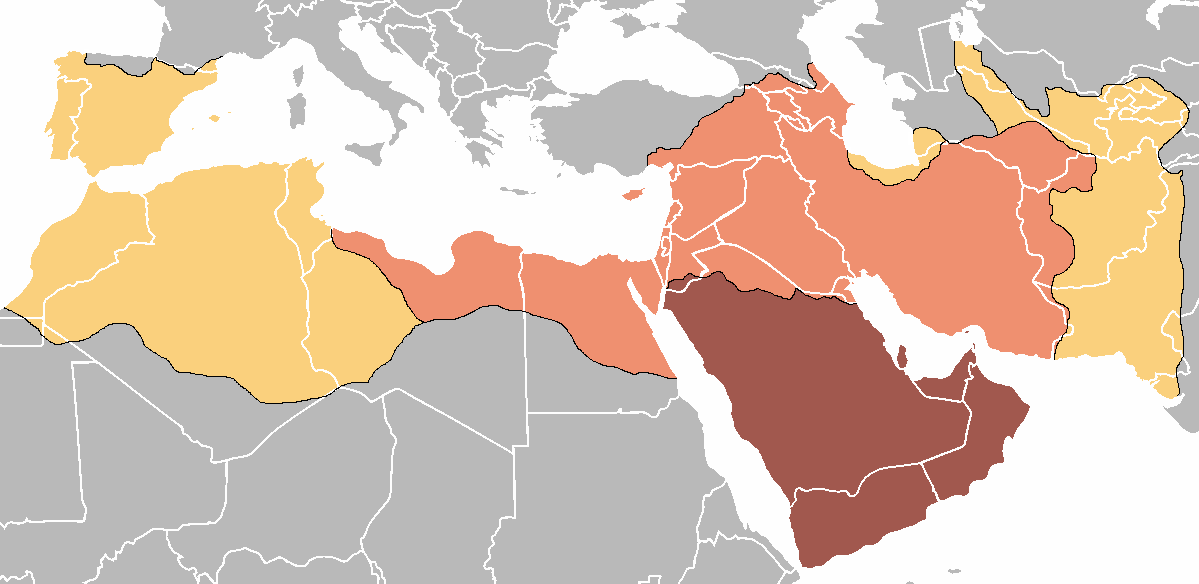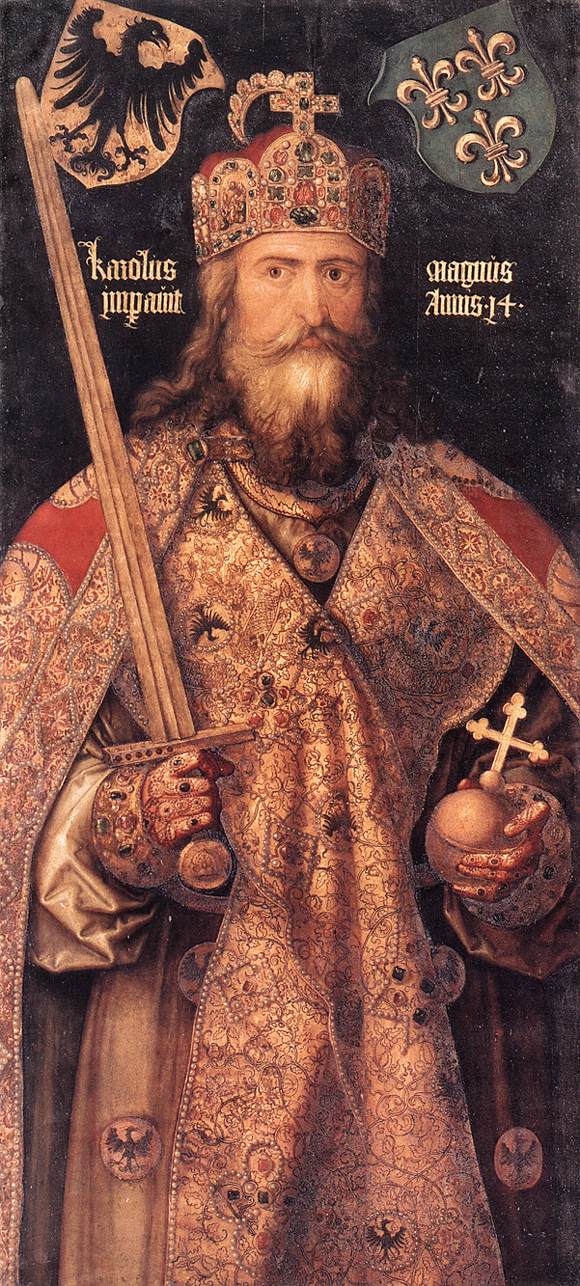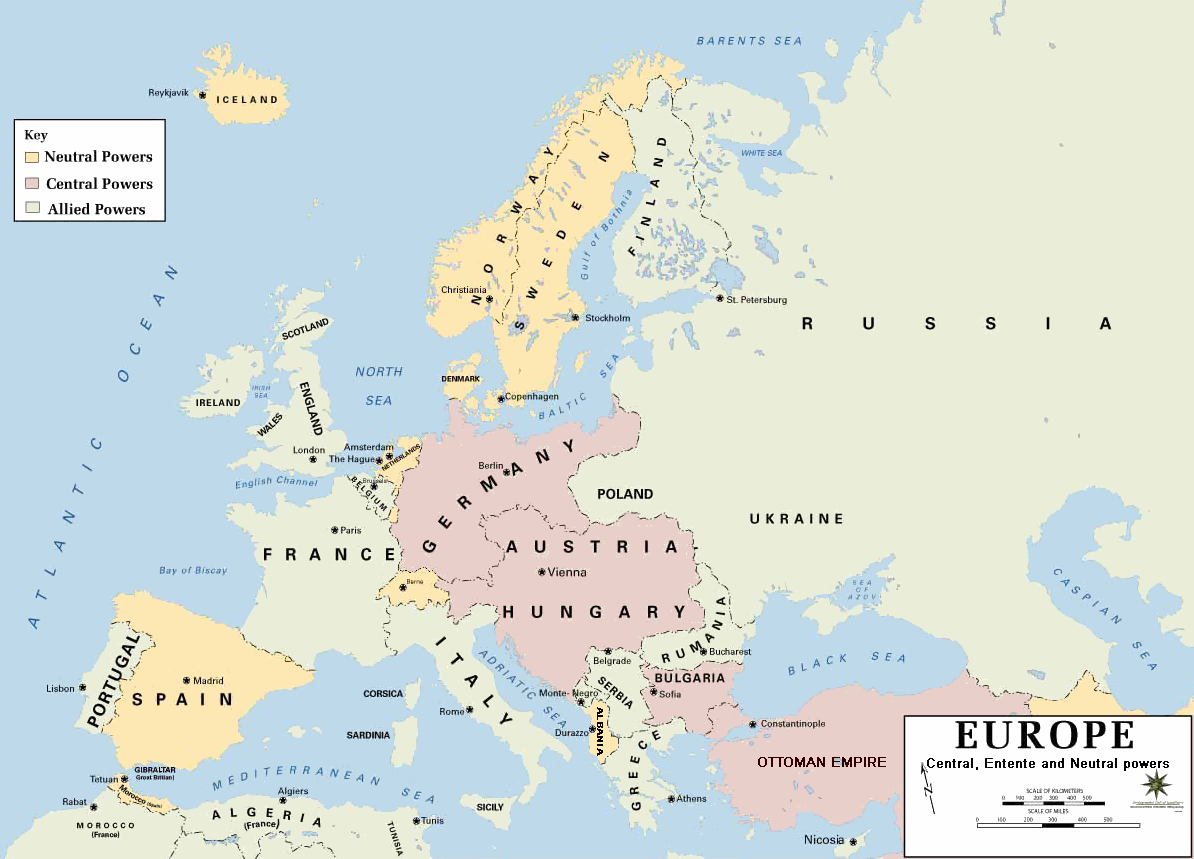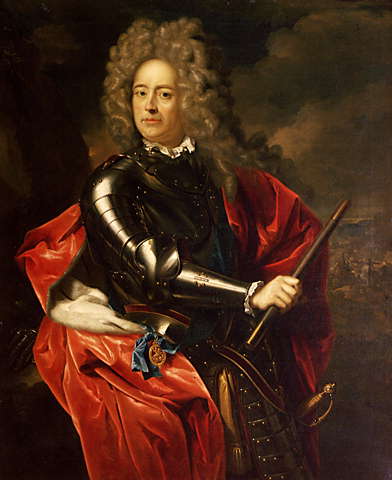Date: 632 - 1193 AD
Location: Arabia, the Levant, Mesopotamia, Persia, Egypt, North Africa, and Spain
 |
| Expansion under the Prophet Muhammad, 622–632 Expansion during the Rashidun Caliphs, 632–661 Expansion during the Umayyad Caliphate, 661–750 |
Ever Since the death of the Prophet Muhammad (PBUH) in 632 AD, a great Muslim nation was born, which by the mid-7th century, already covered Arabia and a large area in Mesopotamia. The first caliph of the Muslim Empire, which is officially to be Muhammad's 'successor', was Abu Bakr. The Rashidun Caliphate, as it was called, then experienced three more caliphs (respectively): Omar, Uthman, and Ali. By the end of Ali's reign, which was in the year 661 AD, the Muslim Empire covered most of North Africa, the Levant, Mesopotamia, Arabia, and a large area in Persia. Sadly, a civil war errupted that led to the split of Islam into the Sunni branch and the Shiite branch. From 661 to 750 AD, a ruling family from Damascus ran the empire and annexed several areas into their nation. Amongst them was the Muslim invasion of Spain. A Berber general, by the name of Tariq Ibn Ziyad, departed from Morocco in 711 AD to cross the Strait of Gibraltar and spread Islam. The Visigoth King of Spain, Roderick, soon suffered a crushing defeat and lost all the territories in Spain within a year. Other acquisitions included Morocco, the rest of Persia, and the Indus Valley. In 750 AD, the Muslim governors of Spain declared their people to be independent and formed a rival caliphate, the Emirate of Cordova. That same year, the throne of the empire was given away to the Abbasids of Cairo. The most famous Abbasid caliphate, which ruled at the times of Charlemagne, was Harun Al-Rashid. Mostly recognized for his alliance with the Franks against the Emirate in Spain, Harun managed to construct a new city on the banks of the Tigris River, Baghdad, which, in his own reign, became the richest city in the known world. Persia soon claimed its independence, as well as the Fatimid Caliphate and the establishment of the Almohad Empire that included Morocco and Andalucia. In 1187, the son of Yusuf Al-Ayyub, which be Saladin, a rich Kurdish man, formed a new dynasty, the Ayyubid Caliphate. Saladin's primary goals were to drive out the Crusaders from the levant and annex all the territories that were lost by the Fatimids 100 years before his reign. that same year, Saladin laid siege on Jerusalem, which was captured peacefully within some three months. This marked the beginning of a Fourth Crusade to retake Jerusalem, but within a few years, Saladin managed to conquer the entire Levant. Despite those territorial expansions, Saladin suffered a defaet from Richard the Lionheart at Arsuf in 1193.
.jpg)









